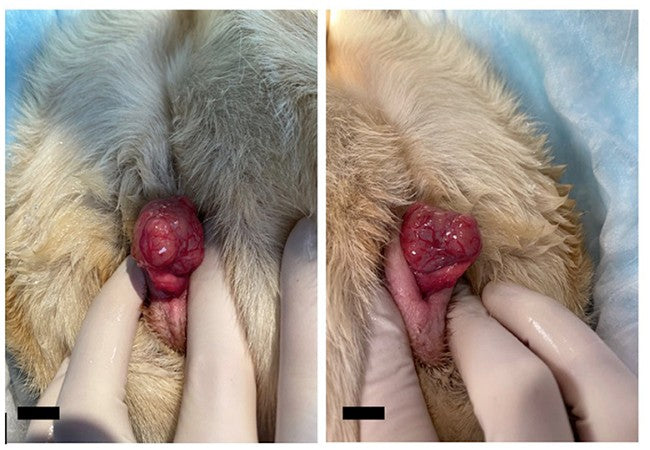Vet Approved Guide: Anal Sac (Apocrine Gland) Adenocarcinoma in Dogs – Early Signs, Diagnosis & 2025 Treatment 🐶🐾

In this article
Vet Approved Guide: Anal Sac (Apocrine Gland) Adenocarcinoma in Dogs – Early Signs, Diagnosis & 2025 Treatment 🐶🐾
By Dr. Duncan Houston BVSc
Anal sac adenocarcinoma is an aggressive cancer arising from the apocrine glands inside your dog’s anal sacs. Though uncommon, it often spreads early and can cause elevated blood calcium. Recognizing early signs and acting fast can significantly improve treatment outcomes. 🛡️
🔍 What Is Anal Sac Adenocarcinoma?
This cancer originates in the apocrine glands lining the anal sacs, producing malignant tumors that grow rapidly. It’s the most common form of anal gland cancer in dogs and frequently metastasizes to lymph nodes and other organs.
📋 Which Dogs Are at Risk?
- Breeds predisposed: German Shepherds, Dachshunds, Springer Spaniels, Cocker Spaniels, Alaskan Malamutes.
- Typically affects middle-aged to older dogs.
⚠️ Common Symptoms
- Scooting, licking, or biting around the anus; perianal swelling or mass.
- Straining to defecate or constipation.
- Anal discharge or ulceration.
- Paraneoplastic hypercalcemia in ~25–40% of cases, causing increased thirst, urination, lethargy, and poor appetite.
- Coughing or respiratory issues if metastasized to the lungs.
🩺 Diagnosis Steps
- Physical/Rectal Exam: A mass may be detected during routine evaluation.
- Fine-Needle Aspiration: cytology to identify cancerous cells.
- Biopsy & Histopathology: definitive diagnosis.
- Staging Tests: bloodwork (checking calcium), abdominal ultrasound, chest X-rays, and lymph node assessment.
🛠️ Treatment Approaches
1. Surgical Removal
- Complete excision of the affected anal sac and enlarged lymph nodes is the cornerstone of treatment.
- Early intervention—before metastasis—is associated with the best outcomes.
2. Chemotherapy & Radiation
- Considered to tackle microscopic disease or metastatic lesions.
- May be used post-surgery or when surgery alone isn’t curative.
3. Managing Hypercalcemia
- IV fluids and diuretics lower calcium levels.
- Bisphosphonates may prevent bone-related calcium release.
📈 Prognosis & Survival
- If caught early and treated aggressively, dogs often live 1–2 years post-surgery.
- With metastasis or late discovery, the prognosis is more guarded, but palliative treatment can maintain quality of life.
- Ongoing monitoring via imaging and calcium checks is vital.
🚨 When to See Your Vet Immediately
- New perianal lump, especially with scooting or straining.
- Blood calcium results are above normal.
- Respiratory signs, lethargy, or appetite loss accompany perianal symptoms.
📱 Vet-Approved Support Tools
- Ask A Vet: 24/7 guidance on perianal masses, staging plans, treatment options. 🩺
🎯 Final Thoughts
Anal sac adenocarcinoma is aggressive but manageable, especially when identified early. Timely rectal exams, prompt staging, surgery, and skilled follow-up care are essential. Many dogs can enjoy 1–2 healthy years post-treatment. Always monitor calcium levels and signs of metastasis. 🐾
For personalized advice and peace of mind, download the Ask A Vet app today. 📲🐶






